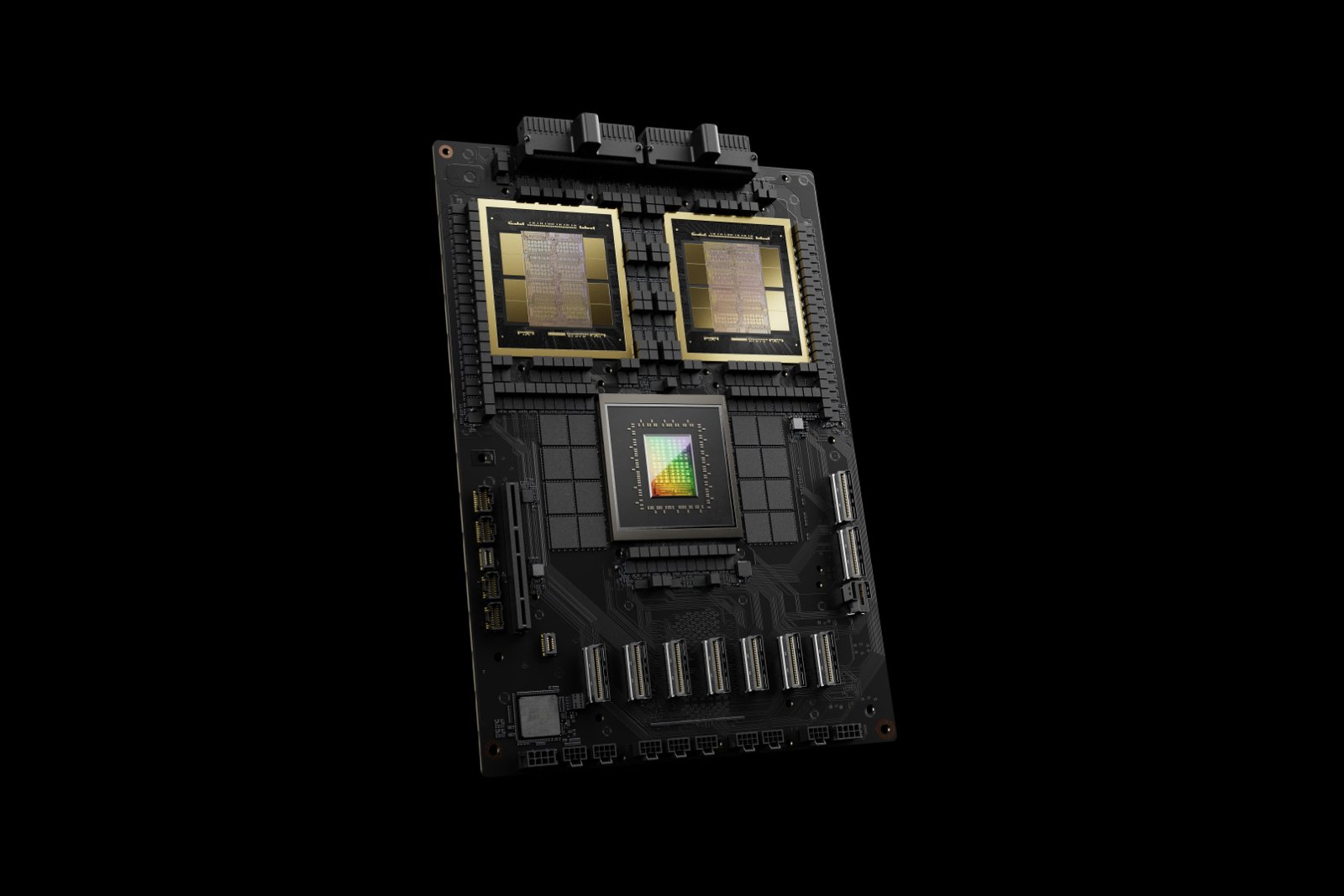“Blackwell is just going to be an amazing system for generative AI,” Huang remarked, envisioning a future where data centers serve as the backbone of AI production.
In a groundbreaking move set to revolutionize the field of artificial intelligence (AI), Nvidia has announced the launch of its most powerful chip to date, the Blackwell B200 graphics processing unit (GPU). This unveiling marks a significant milestone for the US computing giant, propelling it to the forefront of AI innovation and solidifying its position as the world’s third-largest company by value.
The highly anticipated announcement was made by Nvidia CEO Jensen Huang during a press conference held in San Jose, California, on March 18th.
Huang showcased the remarkable capabilities of the Blackwell B200 GPU, boasting an unprecedented 208 billion transistors, a significant leap from the 80 billion transistors found in Nvidia’s previous-generation Hopper chips. Additionally, Huang unveiled the GB200 Grace Blackwell Superchip, a cutting-edge fusion of two B200 chips, further enhancing performance and efficiency.
According to Huang, the Blackwell chips are poised to revolutionize AI training, particularly in the realm of generative AI. “Blackwell is just going to be an amazing system for generative AI,” Huang remarked, envisioning a future where data centers serve as the backbone of AI production.
The significance of Nvidia’s latest innovation cannot be overstated, especially in light of the increasing demand for GPUs among organizations seeking to train large AI models. Amid AI chip shortages in 2023, the scarcity of GPUs reached unprecedented levels, with some likening their availability to that of essential commodities like drugs. Academic researchers, in particular, lamented the challenges of securing access to GPUs, highlighting a growing disparity in GPU accessibility.
Nvidia asserts that its Blackwell chips offer a staggering 30-fold improvement in performance compared to Hopper GPUs when running generative AI services based on large language models such as OpenAI’s GPT-4, all while consuming 25 times less energy. For instance, whereas training GPT-4 previously required approximately 8000 Hopper GPUs and 15 megawatts of power over 90 days, the same task can now be accomplished using just 2000 Blackwell GPUs consuming 4 megawatts of power.
Despite the groundbreaking advancements heralded by Nvidia’s Blackwell chips, questions linger regarding their accessibility. With the company yet to disclose pricing details, industry observers anticipate a hefty price tag that may render these superchips accessible only to a select few organizations.
Sasha Luccioni, of Hugging Face, a company specializing in AI code and dataset sharing tools, warns that the exorbitant cost of Blackwell GPUs could exacerbate existing disparities within the AI community, likening it to a “let them eat cake” moment.
Moreover, the proliferation of data centers to accommodate the burgeoning demand for AI training poses significant environmental concerns. The exponential growth in electricity demand, driven primarily by the generative AI boom, is projected to double by 2026, equivalent to the energy consumption of Japan today. If data centers continue to rely on fossil fuel power plants, this expansion could lead to steep rises in carbon emissions, exacerbating climate change concerns.
Nvidia’s ascent in the realm of AI innovation has not been without geopolitical complexities, particularly amid escalating tensions between the US and China.
The US government’s implementation of export controls on advanced chip technologies, ostensibly to thwart China’s AI development efforts, has forced Nvidia to navigate intricate diplomatic and strategic challenges. As a result, the company has been compelled to develop less powerful versions of its chips for Chinese customers, underscoring the intricate interplay between technology, geopolitics, and national security.
In unveiling its revolutionary Blackwell chips, Nvidia has not only raised the bar for AI performance but has also ignited a broader conversation about accessibility, environmental sustainability, and geopolitical dynamics shaping the future of AI innovation. As the AI landscape continues to evolve, the implications of Nvidia’s latest breakthroughs are poised to reverberate across industries and nations, heralding a new era of AI-powered possibilities.
